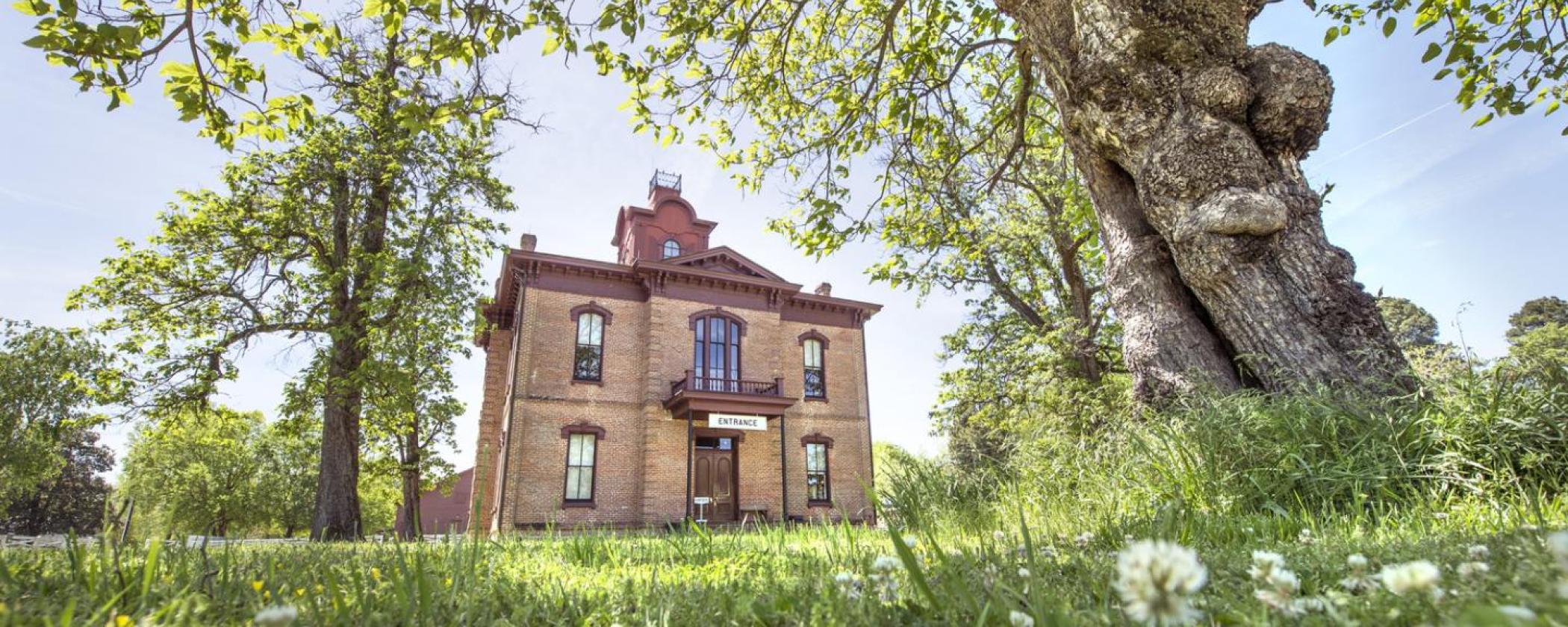
You Couldn’t Make This Story Up!
By: Billy NationsBlack History Month is upon us, and we think it appropriate to remind our would-be visitors to Historic Washington State Park of the program opportunities that lay in store for them as related to the African-American component of the Washington story.
One of the staple programs that we offer is the tour entitled, “Mind, Body, and Spirit." This tour takes the visitor to different parts of town that tell stories of certain African-Americans who made their marks, some humble, some more illustrious, on Washington and the region.
A stop along this tour concerns one Dolly Pennington, a free woman of color who is touted to be one of the early lot purchasers of Washington, having bought lot 16 of the newly surveyed town of Washington around the year 1826. It seems that Dolly Pennington, who had saved money from duties as a laundress and cook at Elijah Stuart’s tavern, had become somewhat of an early real estate speculator in and around Washington. She was also ultimately able to acquire by purchasing her enslaved daughter, Nancy, from Hugh Blevins.
Another person mentioned in the tour is Gad Bradley. He was a free man of color who had moved from Tennessee as an enslaved child with his mother and siblings—three brothers and a sister. By Edward Bradley’s will, Ann, the mother, and her children would be free upon his death. Thus, 15 years after coming to Arkansas, Gad Bradley was enabled to practice his trade of blacksmithing as a free man. By the 1850s Gad had a blacksmith shop on the edge of Washington proper, approximately across from the modern-day James Black shop that so many visitors experience in Washington.
There was a point at which Gad had a large demand for his work and needed help. He contacted Stephen Dimery, also a free man of color, and invited him and his family to come to Washington and help run the blacksmith shop. So it came to pass that Stephen and his family made the move from Catahoula Parish, Louisiana to Washington. Two of his children of Stephen were Absolom and Ezekiel. They were teenagers during the later years of the 1850s here in Washington and helped out around the shop. It was perhaps during this time that Ezekiel met Nancy Pennington and they started courting.
In 1859 the Slave Code was enacted in Arkansas, requiring all free persons of color to either become enslaved or leave the state. It was shortly after this that Gad Bradley, Dolly Pennington, Stephen Dimery, their families, and others like them, made the decision to leave Arkansas for better environs. The records indicate that Ezekiel Dimery married Nancy Pennington in Sevier County, Arkansas, before the group made up of the Bradley, Dimery, and Pennington family made their way across the Indian Nations and into Kansas, a free state.
With the drums of war beginning in 1861, the two Dimery boys wanted to do their part for the cause of freedom. In late 1862, Absolom, being the oldest, was first of the boys to join up. He became a member of the First Kansas Colored Volunteer Infantry. In mid-1863, Ezekiel joined the Second Kansas Colored Volunteer Infantry. It is worth noting, that in 1863, with the battles of Honey Springs and Cabin Creek, I.T., the First Kansas Colored was the very first African-American unit to see combat in the Civil War.
As 1863 wound to a close, the First and Second Kansas were garrisoning Fort Smith, Arkansas. They made scouting and foraging missions into the Indian Territory during that time. It was here that the animosity of the Choctaw and Cherokee troops was aroused toward the Federal Army, and the troops of color, especially. They accused the Kansas troops of atrocities toward their families and vowed revenge.
In early 1864, General Thayer, commander of the Frontier Division holding Fort Smith, was ordered to march for southwest Arkansas and a rendezvous with General Steele’s Seventh Corps from Little Rock. They were to meet General Banks in Shreveport, the headquarters of the Transmississippi Confederate armies. From there they would move into East Texas, the industrial heart of the Transmississippi.
By the second week of April, Banks was in full retreat after defeats at Sabine Crossroads and a stalemate at Pleasant Hill, Louisiana. General Steele, having been reinforced by Thayer, had stalled out at Prairie D’Ane and was seeking to resupply and buy time within the garrison of Camden, on the Ouachita River.
Steele’s army, in dire need of food by this time, was conducting foraging expeditions in the area, including a place with the forbidding name of “Poison Springs." There were 1,500 soldiers made up mostly of the First Kansas escorting the supply wagons. The unit was ambushed by around 3000 Confederate soldiers under the command of Samuel Bell Maxey. Maxey’s force included Texas, Missouri, and Choctaw troops. It was here where the Choctaws sought vengeance on the First Kansas, by committing horrible atrocities on the Kansans as they offered to surrender. Very few of the regiment made it back to Camden after the engagement. But for the fact that Absolom Dimery was sick in Camden, he no doubt would have been one of the statistics.
General Steele, with defeats at Poison Springs and Marks Mills, and the failure of Banks to the south, decided to march back to the safety of Little Rock. By the time the Confederates realized the Federals were gone out of Camden, Steele had a two days head start. The Confederate, now reinforced from Louisiana by Churchill’s and Walker’s Brigades, intercepted the retreating Federals as they were attempting to cross the Saline River at Jenkins’ Ferry.
A pitch battle ensued as the Confederates pushed brigade after brigade at the hastily constructed log and earthworks of the Federal rear guard. Most of the battle was fought with a steady rain coming down and ground conditions were such that wounded would fall in the water and attempt to crawl to the small knolls above the waterline in order to avoid drowning.
At one point in the struggle, there was a Confederate artillery battery wreaking havoc with the Federal center. Colonel Crawford, of the Second Kansas Colored, offered his unit as a force to capture the Confederate battery position. It was Ezekiel’s Company H of the Second Kansas Colored that was selected to carry out the grim task. Ezekiel, along with his comrades of Company H, charged the position with bayonets amid a hail of gunfire and shrapnel. They captured the guns and promptly turned them on the fleeing Confederates. Many of the gunners were bayoneted where they stood, as the Second Kansas soldiers screamed, “Remember Poison Springs!” One veteran, when asked whether they bayoneted the Confederates while they were trying to surrender, said “we didn’t deny it."
With the end of the battle, the Confederates were content not to pursue the Federals as they made the long march back into Little Rock and much wanted safety, food, and rest.
With the end of the Red River Campaign, as it was called, organized campaigning by both armies was over in southwest Arkansas. Thayer’s forces marched back to their positions along the Arkansas River near Fort Smith until the end of the war.
Well, what about the Dimery boys? Ezekiel and Absolom, both lived out the remainder of their lives in Lawrence, Kansas. Absolom, as you might suspect, was listed as a blacksmith by trade. He passed from the Earth in 1890. His brother, Ezekiel, was employed as a butcher and later as a laborer. Nancy Dimery had passed away in 1861. Ezekiel was married two more times before his death in 1910.
And so, there you have it in brief. The story of two boys who grew up in southwest Arkansas and left to maintain their freedom and fought for that freedom a few short years later up and down the same dirt trails they grew up traveling as teenagers. You can’t make that story up.




